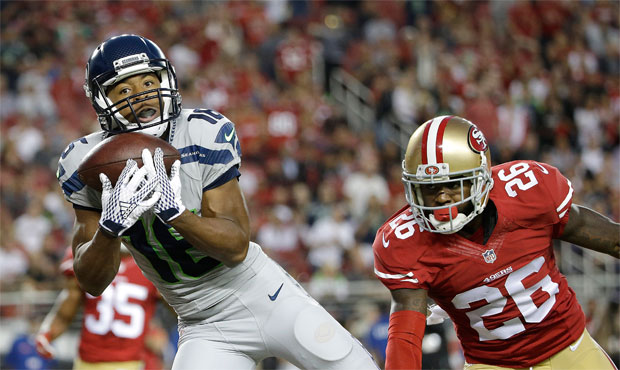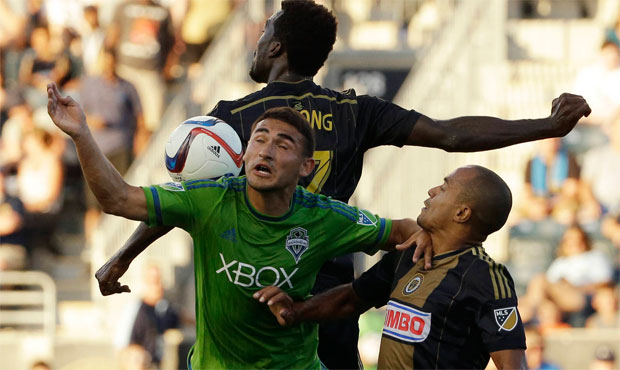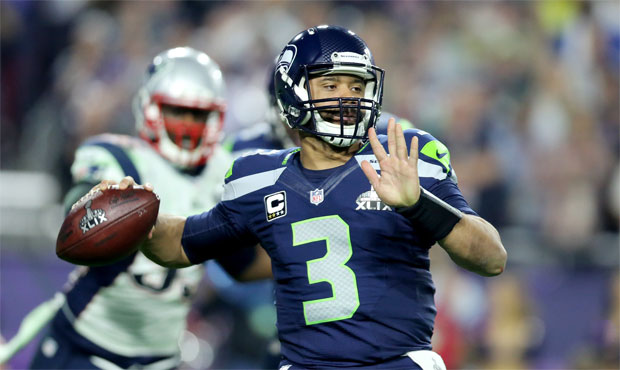Brady Henderson
Russell Wilson and the risk of playing without a new contract
 Russell Wilson would take a risk by playing without a new deal, but has that risk been overstated? (AP)
Russell Wilson would take a risk by playing without a new deal, but has that risk been overstated? (AP)
Any discussion about the possibility of Russell Wilson playing out the final year of his rookie contract – which both he and his agent have stated a willingness to do – at some point comes back to the financial risk he would be taking. The risk, according to popular thinking, is that Wilson’s earning power next offseason could be severely diminished if he were to sustain a serious injury at some point in 2015.
But how much of a risk would he really be taking?
Jason Cole of Bleacher Report recently offered an interesting take on that question via a Tweet in which he pointed to Drew Brees, Peyton Manning and Sam Bradford as examples from the last 10 years of quarterbacks whose market value didn’t take an enormous hit following injuries.
It’s a point worth considering, so let’s do so.
First, a history of the three players Cole mentioned.
Brees, then with San Diego, dislocated his throwing shoulder during the final game of the 2005 regular season, requiring surgery for a torn labrum and a damaged rotator cuff as well as a lengthy offseason rehab. Three-and-a-half months after the injury, Brees signed a free-agent deal with New Orleans worth $60 million over six years. Remember, this was in 2006, when deals were relative to a salary cap that was much lower than it is now. It was also before Brees won a Super Bowl and set NFL passing records. How much did the injury impact Brees’ market? On one hand, he only had two teams interested in signing him as their starter, and according to this AP story, Brees’ contract only included guaranteed money in the first year. But it still made him one of the league’s higher-paid quarterbacks and represented a raise from the $8.078 million he made in 2005 as San Diego’s franchise player. Brees was grossly underpaid by the end of his first contract with New Orleans, by which point he had emerged as one of the NFL’s best quarterbacks. But it was a good deal when he signed it based on what he had accomplished to that point in his career.
Manning missed the entire 2011 season because of a chronic neck issue that required multiple surgeries, including one that September to fuse together two vertebrae. When he was released by Indianapolis the next offseason, more teams were interested in Manning than he was interested in playing for. The Seahawks, for instance, flew to a Denver airport and waited on a tarmac just hoping to meet with him. Perhaps the biggest free-agent tour in NFL history ended with Manning signing a five-year deal with Denver that averaged $19.2 million a season. Manning received $18 million fully guaranteed at signing, with the remainder of the $58 million in total guarantees contingent upon his neck holding up. It was a top-shelf deal even with the protections in place against Manning’s neck becoming an issue.
Bradford’s situation is different as his post-injury value is based on his trade market as opposed to his free-agent market. Bradford had already been injured several times over his first four seasons when he tore his ACL last August. He missed the season and was dealt in March to Philadelphia, which gave up a whole lot to get him. The Eagles sent St. Louis their starting quarterback in Nick Foles, swapped a fourth-round pick for a fifth-rounder and also gave up a 2016 second (they could receive a conditional 2016 pick based on Bradford’s playing time). Philadelphia would have owed Foles a little over $1.5 million in the final year of his deal. Instead, they inherited the rookie contract Bradford had signed as the No. 1 overall pick, which has a year remaining at just under $13 million. So the Eagles thought enough of Bradford despite his ACL tear (and history of injuries) to trade an emerging and cost-controlled quarterback, give up a good amount of draft capital and also take on a relatively hefty salary.
Wilson is in a different situation than Brees and Manning as he likely won’t reach free agency next offseason, in which case he won’t have the rest of the league bidding for his services. And while Brees, Manning and presumably Bradford were/will be able to continue playing, there’s the possibility – albeit a slight one – of Wilson sustaining a career-ending injury. That would be especially unfortunate considering he’s only made around $2 million in salary to this point in his career.
But those three instances suggest that a less severe injury wouldn’t necessarily preclude him from receiving a top-shelf contract.
Playing next season without a new deal would carry some degree of risk for Wilson. He wouldn’t have taken out an insurance policy if he didn’t feel that was the case. But perhaps that risk has been a bit overstated.

























Comments